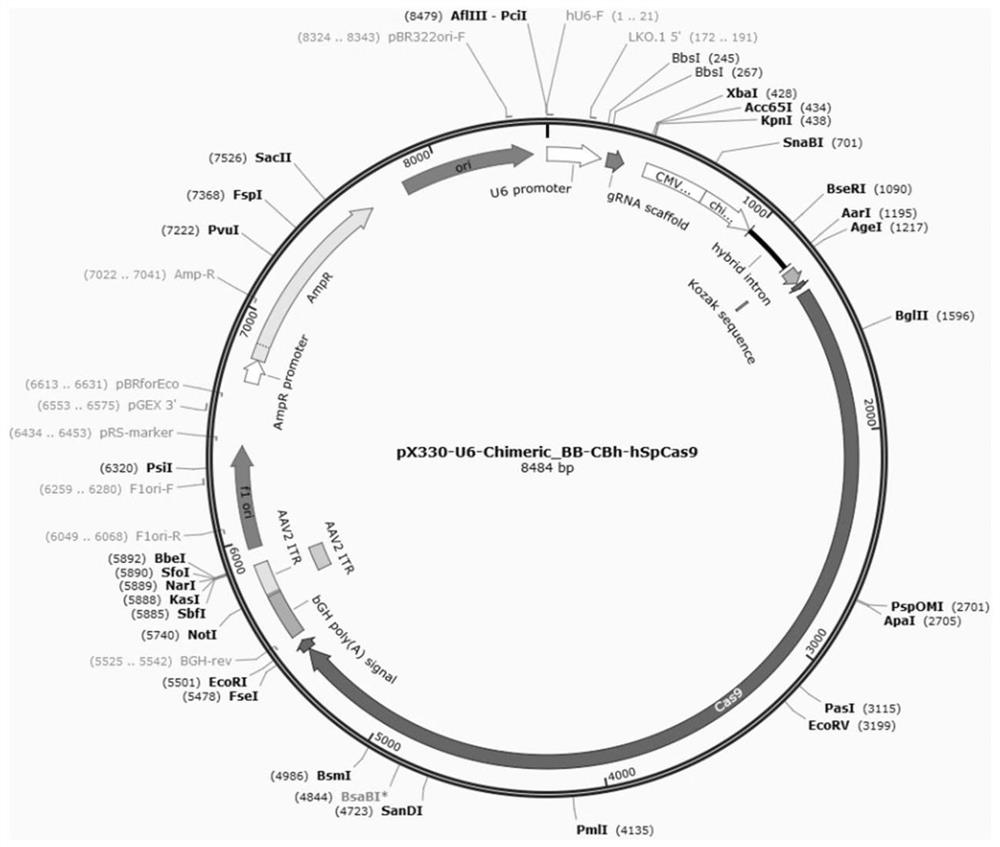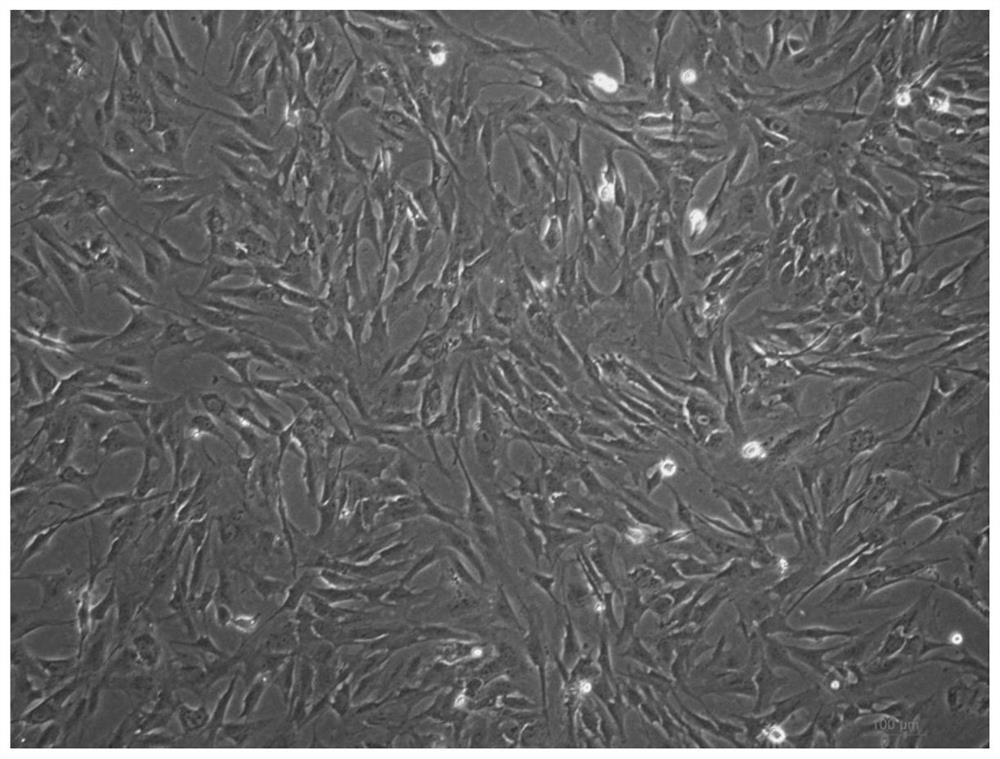sgRNA targeting knockout of TNFα gene and porcine embryonic fibroblast cell line with knockout of TNFα gene and its application
A fibroblast and α gene technology, applied in the field of genetic engineering, can solve problems such as incomplete silencing, inability to explain gene functions well, safety risks, etc., achieve great application research value, complete knockout effect, improve efficiency and specific effect
- Summary
- Abstract
- Description
- Claims
- Application Information
AI Technical Summary
Problems solved by technology
Method used
Image
Examples
Embodiment 1
[0035] Example 1 Construction and detection of CRISPR-Cas9 targeting vector targeting TNFα gene
[0036] 1. Sequence design of TNFα gene sgRNA
[0037] Download the porcine TNFα gene sequence (accession number NC_010449.5) from the NCBI website, and use the website http: / / crispr.mit.edu / to design knockout target sites on the first exon of the gene, and a total of 10 were designed Target, according to the PCR sequencing peak map, the sgRNA with the highest set of peaks is screened to be the sgRNA with high editing efficiency, and the final selected sgRNA target sequence is: GCGCTCGCCAAGAAGGCCG (as shown in SEQ ID NO: 1), according to the BbsI restriction Dicer designs restriction sites at both ends of the sgRNA, and adds CACCG to the 5' end of the sgRNA to form Oligo1, the sequence is shown in SEQ ID NO: 2; the 5' end of the reverse complementary sequence is added with AAAC, and the 3' end Add C to form Oligo2, and the sequence is shown in SEQ ID NO: 3. Finally, the designed ...
Embodiment 2
[0056] Example 2 Construction and genomic identification of TNFα gene knockout pig embryonic fibroblast cell line
[0057] 1. Screening of positive monoclonal cells
[0058] (1) When the porcine embryonic fibroblasts grow to a confluence of 70% to 90%, prepare a mixture containing 150 μL of electroporation solution, 6 μg of expression vector pX330-TNFα and 3 μg of G418 resistance plasmid, and use the A024 program for electroporation.
[0059] (2) After 6 hours of transfection, it was changed to growth medium containing 10% fetal bovine serum, and after 24 hours, the cells were digested and divided into plates, and the cells in the 6-well plate were passaged into 10 to 20 10 cm dishes, and 600 μg / mL of G418 was added for For screening, the medium was changed every 4 to 5 days, and the monoclonal cell mass could be obtained by changing about 2 times.
[0060] (3) Select monoclonal cells with regular morphology and good condition, and transfer them to 48-well plates with a cloni...
PUM
 Login to View More
Login to View More Abstract
Description
Claims
Application Information
 Login to View More
Login to View More - R&D
- Intellectual Property
- Life Sciences
- Materials
- Tech Scout
- Unparalleled Data Quality
- Higher Quality Content
- 60% Fewer Hallucinations
Browse by: Latest US Patents, China's latest patents, Technical Efficacy Thesaurus, Application Domain, Technology Topic, Popular Technical Reports.
© 2025 PatSnap. All rights reserved.Legal|Privacy policy|Modern Slavery Act Transparency Statement|Sitemap|About US| Contact US: help@patsnap.com



